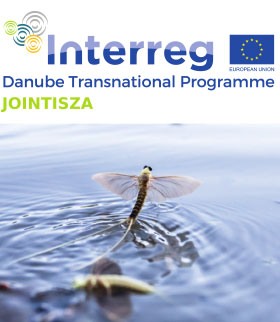Danube Watch 2/2017 - Protecting a shared legacy
Protecting a shared legacy

JOINTISZA will strengthen transnational water management and flood risk prevention. It will also enhance the long-term status of the waters of the Tisza River Basin. Every year, in late spring or early summer, the Tisza bursts into life with millions of mayflies (Palingenia longicauda). Known as the Tisza mayfly, or long-tailed mayfly, it is Europe’s largest mayfly. The annual appearance of these ephemeral, aquatic insects is an indicator of clean, unpolluted water. We hope that the project activities will contribute to the recurring presence of this unique species, and also ensure good quality water, in sufficient quantities, to improve the livelihoods of the people of the Tisza Rivers Basin through agriculture, forestry, pastures, mining, navigation and energy production.
The JOINTISZA Project: Strengthening Cooperation between River Basin Management Planning and Flood Risk Prevention to Enhance the Status of the Waters of the Tisza River Basin
The Tisza River Basin countries – Hungary, Romania, Serbia, Slovakia, and Ukraine – have a long history of cooperating to protect this important region from the threat of pollution, flooding and droughts. Building on this legacy of cooperation, the JOINTISZA project is bringing together 17 partners from the five countries sharing the waters of the Tisza River Basin, all of whom are keen to work towards developing an updated Integrated Tisza River Basin Management Plan (ITRBMP).
The implementation of the JOINTISZA project
will achieve the following outputs:
- an improved geographic information system (GIS)
- guidelines on best management of urban hydrology, and organisation of related training programmes
- a guidance paper on climate change-induced water quantity issues to assist in overcoming challenges
- a final draft of the updated ITRBMP
- a strategy for public involvement and participation.
JOINTISZA, like any basin-wide project, needs to communicate its objectives to a targeted audience. A series of external communication tools and methods are being developed to assist in the dissemination of project messages and ensure that accomplished outputs and results are communicated to all interested parties and stakeholders.
The Tisza River is the longest tributary of the Danube and the largest sub-basin in the Danube Basin, and for this reason, the project joined in this year’s Danube Day celebrations. Public involvement and a participation strategy are key assets that will help the JOINTISZA project partners and RBMP planners to carry out a meaningful information, consultation and active involvement process. It will also influence planning and the creation of a supportive social environment for the implementation of the Joint Programme of Measures (JPM).






